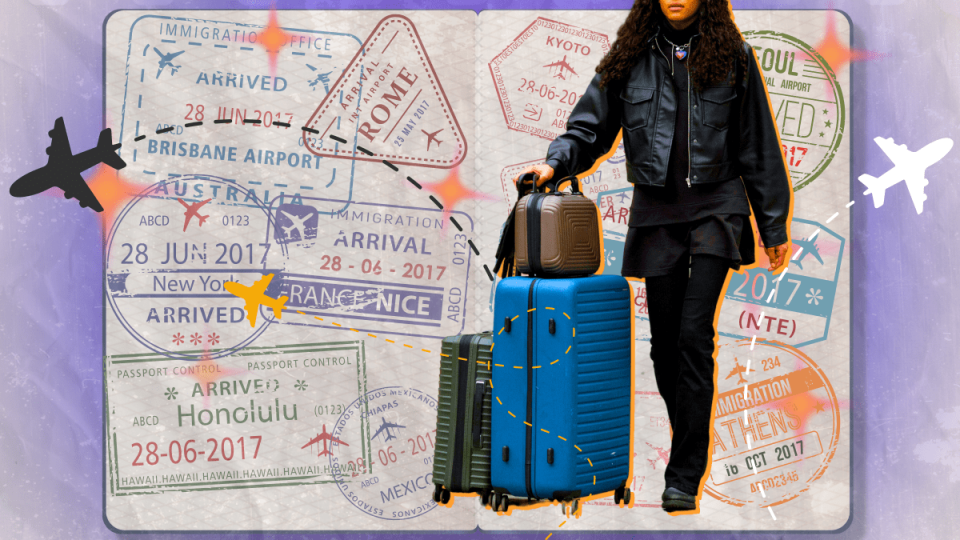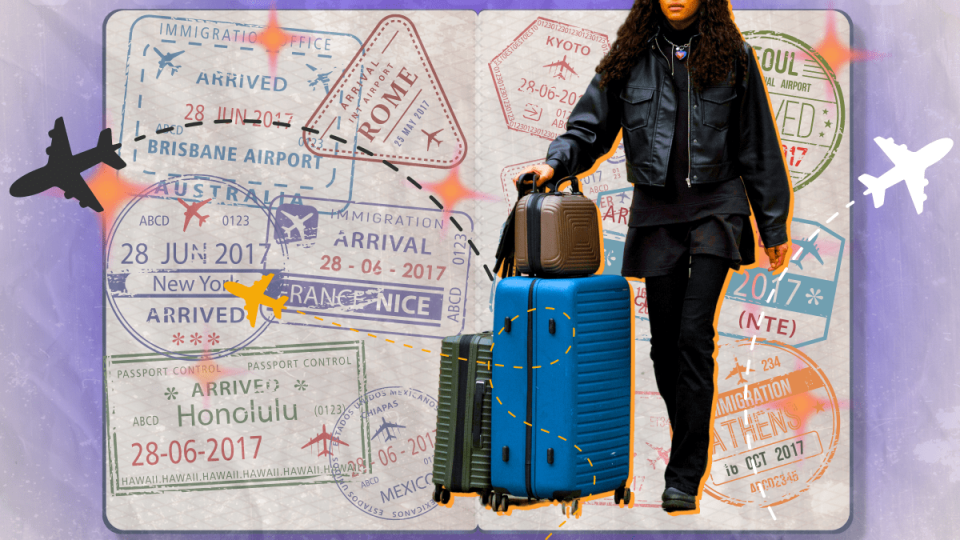How a Press Trip Comes Together
Welcome to Travel Week! Fashion people are always on the move, and the industry has been venturing into tourism and hospitality more than ever. So with summer-getaway season in full swing, we’re bringing you five days of expert-led product recommendations, outfit ideas, wellness tips, packing advice and more. We hope you stay a while.
It used to be that press trips were an insider phenomenon. Select media and influencers, invited by PR teams, flew to exotic locations on a brand's dime. The general public maybe saw an Instagram photo or two mentioning the trip and tagging the brand. Editors chatted about their experience with co-workers at the office. But in the past few years, especially as TikTok gained popularity, the fourth wall has been broken.
Now, with several of them having gone viral in recent months, people who aren't in media, fashion or beauty are interested in what goes on during these trips. Still, little is known outside the industry about how they actually work.
The truth is, it's different for every brand, says Marco D'Angelo, founder of Platform PR. "There are three different tiers of what you want to get out of it," he explains. "The most important one, especially for somebody who maybe doesn't have a bigger budget, is community building." (The others, he says, are entertaining trips for brand awareness and more educational ones that surround a new launch.) While there's sometimes a direct ask in exchange for a trip, such as social content for influencers or a feature story for editors, most of the time, "a trip doesn't necessarily mean that you have to pay a celebrity or get a story out of it," according to D'Angelo. "But at least you can just show them what your brand is all about."
Gabrielle Katz, founder and principal of Accent PR_ojects, thinks independent brands get "more bang for their buck when trying to curate a community of media supporters and those with a digital presence" with a trip of five people versus a dinner in New York City with 40 attendees. "When done well, they're super fun, and at the end of the day, making meaningful connections that last will sustain a brand from a comms perspective," she says.
But that doesn't mean putting a press trip together is simpler than a local dinner: It's pretty complicated, starting with a conversation between PR and the client.
If a PR agency goes to the client, Katz explains, it's because they "need another angle for storytelling around a big brand moment or need some adrenaline and want to tell bigger brand stories, which will come from a more immersive experience." Alternatively, the brand might have the idea for a trip, and the agency will work with them on their plan.
Choosing a location comes next, and that's generally tied to "where the brand is based or opening a store or doing a runway show," Katz says. "The location is the impetus and part of the beginning planning process."
Marie-Laure Fournier, president of Fournier PR + Consulting, echoes that statement: Since 70%-80% percent of her clients aren't American, she sees the need to take media directly to the brand, whether in Monaco or Paris, for them to see where the magic happens. A dinner in New York, she explains, just doesn't do the job.
"It costs a lot of money to do a press trip and fly everyone business class, but I do really believe that editors need to come where the DNA of the brand is to really understand it," Fournier says.
When it comes to invites (usually the next step), Fournier isn't interested in having influencers on trips, and doesn't feel it's worth the return-on-investment. Having a feature story in a publication is the goal, so that means it's all editors on trips. "No one can write stories like an editor," she says. "And these beautiful stories, some of them actually became national pride," featured in overseas media like CNN Indonesia.
For Katz and her clients, it's about being mindful about the budget and ROI so they nail the right mix of writers and influencers. "Obviously, schedule depending and with limited space, you just need to be strategic about going too wide with invites and also too dedicated," she argues.
"Press trips are a lot of moving parts and logistics," Katz continues. "While inviting media, confirming stories and managing budget, we also need to work on transportation, programming, accommodations, negotiating fees for appearances when needed." She says no press trip has a budget of less than $30,000, and can go upwards of $100,000.
"Once the budget is set, we're able to start planning the programming," Katz adds. "We do this as we're sending out invites."
D'Angelo says some trips call for legacy media, but for others, he likes to bring writers and social media influencers from "different specialties, like lifestyle, pop culture, music and entertaining" — even for fashion trips. He cites Evan Ross Katz as an example of a writer who isn't tied to a magazine, but brings a different energy to a trip, a personality, in terms of story content or even just social sharing.
"Editors now actually have some sort of a social media presence, and also people are interested in what the editors do behind closed doors," he says. In other words: No longer are they just talking to each other at the office about their trip — they're sharing with their audience.
Katz likes this mix of media and influencers because you get well-rounded coverage. "This way, you have a substantial media feature that will help deliver the trip's message, as well as social support with people who resonate with the brand," she says. "It's important to confirm all expectations for attendance ahead of time, so a lot of it has to do with who can work within the guidelines."
These expectations vary greatly from PR to PR and brand to brand, and different publications have different types of policies. Most editors I spoke with won't promise a story in exchange for a trip, but will get to know the brand and include them in a story organically when it makes sense.
"It's against policy," says Amanda Mitchell, senior beauty writer at Refinery29. Instead, she gets story inspiration while on the trip and considers the brand for content moving forward. This is the rule at many publications (including Fashionista), though the travel industry does have different standards.
The expectations for influencers are different. Content creator April Lockhart says she often has a set of deliverables when she attends a trip with a brand, such as posting in the clothes provided to her. Having recently left her role as director of influencer and partnerships at Ilia Beauty to be a full-time influencer, she's been on both sides: She sees the value of press and influencer trips as a creator and a marketer.
"Having a brand background, I know firsthand how connecting with creators on a trip or event has led to long-term partnerships," she says. "They become top of mind. You get to know their story, and they're no longer just a face on the internet. Same goes for the brand. To me, there's always value in relationships. It's a small industry, and even if the trip might not be with your dream brand, you never know where those people may work down the line."
When it comes to trip activities, though, Lockhart notes that it can't just be all work for the influencer: You're giving the brand days of your valuable time, so there has to be a good reason to go.
"Creators have to feel they're gaining value in some way, whether that's a destination they've always wanted to go to, their group of friends being there or even free dinner," she says.
While these trips look glamorous — and they are, in many ways, with expensive hotels and dinners involved — it's still work.
"Events are work, parties are work, dinners are work," Mitchell says, adding that "a press trip feels like work because it's a longer version of an event" and you have to be "on" and professional the entire time.
Other editors agree: It's not a vacation, no matter what the Instagram photos look like. It can be stressful figuring out what to pack, what to wear, whether you're going to know or even like the group you're with. Oftentimes, editors don't even have an itinerary until they get to a destination. Plus, most still have to publish stories and be "available" when they're away.
"I spend a lot of the time on press trips just stressing about things [back at home] because I couldn't put a pause on my life to go on this press trip," Mitchell says. "I love them, they're so much fun," she adds, noting that getting to learn about a brand directly has value. But relinquishing control to a brand and publicists you might not know well is one of the most stressful parts of being on a trip. They're booking everything, and you're just along for the ride. You just hope the brand or agency is organized and you'll know about transportation, meals and any free time as soon as possible.
Most of the time, editors and influencers don't get a plus-one for press trips (there are some exceptions!), so there's also a First Day of School anxiety about the group you end up with. This can be a struggle for the introverts among us, but there's comfort in knowing that everyone's in the same boat, more or less.
Lockhart, who is based in Nashville, TN, uses this as an opportunity to meet other creators and forge relationships.
"Traveling with people makes you so much closer, and you always leave feeling like you know them in a new way," she says. "It's like summer camp — only that specific group will have those special memories, and it builds this long-term loyalty to the brand."
Never miss the latest fashion industry news. Sign up for the Fashionista daily newsletter.



